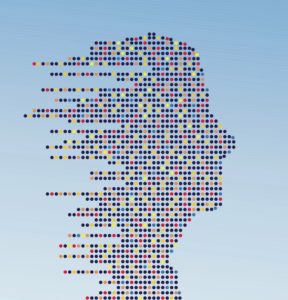“There are two kinds of somatic mutations that get missed,” says Christopher Walsh, MD, PhD, chief of Genetics and Genomics at Boston Children’s Hospital. “One is mutations that are limited to specific tissues: If we do a blood test, but the mutation is only in the brain, we won’t find it. Other mutations may be in all tissues but in only a fraction of the cells—a mosaic pattern. These could be detectable through a blood test in the clinic but aren’t common enough to be easily detectable.”
That’s where deep sequencing comes in. Reporting last month in The New England Journal of Medicine, Walsh and postdoctoral fellow Saumya Jamuar, MD, used the technique in 158 patients with brain malformations of unknown genetic cause, some from Walsh’s clinic, who had symptoms such as seizures, intellectual disability and speech and language impairments. With deep sequencing, they were able to identify mutations affecting as few as 10 percent of cells in a blood sample.
“By limiting ourselves to selected genes, but covering them more deeply, we may be able to find more answers for families and better understand these disorders,” says Walsh, also principal investigator on Boston Children’s portion of the Undiagnosed Disease Network.
Instead of analyzing whole genomes or exomes (the protein-coding regions of the genome), deep sequencing focuses on panels of known or suspected genes but drills down deeper. Whole genome or exome sequencing usually breaks our DNA into little fragments that are read multiple times—typically 30—to find any disease-causing mutations. But 30 reads aren’t enough to reliably catch mutations that only occur in 15 to 20 percent of our cells—especially given that mutations may affect just one of our two copies of a gene.
So Walsh, Jamuar and colleagues scaled up the number of reads, sequencing each candidate gene not 30 times but at least 200 times. In the end, they found mutations in 27 of their 158 patients.
Eight of the 27 had mosaic mutations, occurring in only a proportion of their blood cells. In five of the eight, studies based on traditional Sanger genomic sequencing, the current gold standard for genetic diagnosis, missed their mutations. One had undergone prior whole-exome sequencing that also missed the diagnosis. (It’s possible, of course, that some of the remaining patients had mutations only in their brain, which isn’t readily sampled.)
“Traditionally, our genes are considered to be the same across all cells of our body, and disease-causing mutations are either inherited from one or both parents or occur in the parent’s sperm or egg before conception,” says Jamuar, now a clinical geneticist at the KK Women’s and Children’s Hospital in Singapore. “Our study creates a paradigm shift, providing evidence that a significant proportion of mutations causing brain disorders occur after conception and would be missed by routine testing.”
Walsh believes the results could help explain other brain-based disorders such as autism, intellectual disability and epilepsy that have eluded a genetic diagnosis. “These somatic mutations are probably more common as causes of intellectual disability, and maybe even some psychiatric conditions, than people have generally realized,” he told the Howard Hughes Medical Institute (HHMI). “It’s really time to start investigating that systematically.”
In a separate paper published concurrently in Cell Reports, Walsh’s lab used another deep-dive method, conducting genome-wide sequencing of individual neurons. The results showed that copy number variants—variations in the number of copies of chromosomes or chromosome fragments—are common even in the absence of disease. Aside from the interesting questions this raises about why cell-to-cell variations exist, the single-cell technique is also better at detecting mosaicism than current sequencing methods, which return an average of the sequences of multiple cells in a sample.
Read more in these press releases from Boston Children’s and the HHMI, coverage on GenomeWeb Daily News and BioWorld Today (subscription), and this terrific in-depth article from the Simons Foundation’s Quanta magazine, which describes a related study from the Walsh lab in Cell Reports.







